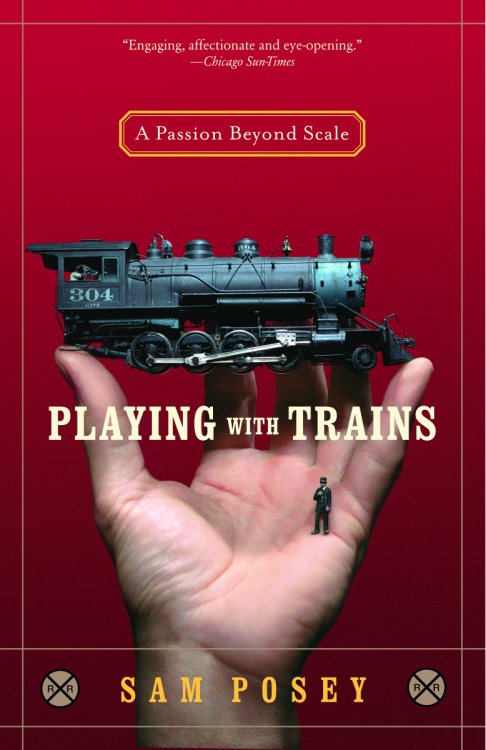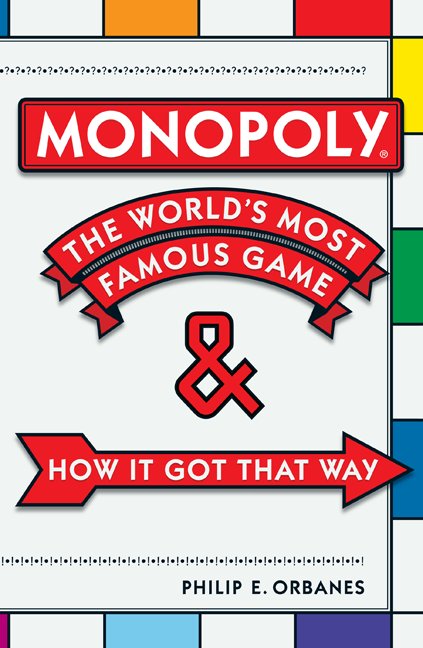Playing with Trains: A Passion Beyond Scale by Sam Posey
 Several years before my first D&D character ever cast his first Magic Missile, I had become enchanted with the world of miniatures and model railroads in particular. For a Christmas or a birthday when I was nine or so, I picked out an HO-scale model railroad set from a Michael’s in Texas and then would occasionally purchase a new boxcar, a horrible styrofoam mountain with a tunnel, or some miniature townsfolk in anticipation of the great layout my father and I were building together. A figure eight or a simple loop would never do for him. Instead, the layout he began building himself on a huge sheet of plywood stored under my parents’ bed had multiple inclines and an elaborate, intricate track layout, a Byzantine affair that was never completed. Aside from a few test runs, my locomotive never made any sort of journey and I believe it was probably thrown away or sold at a garage sale.
Several years before my first D&D character ever cast his first Magic Missile, I had become enchanted with the world of miniatures and model railroads in particular. For a Christmas or a birthday when I was nine or so, I picked out an HO-scale model railroad set from a Michael’s in Texas and then would occasionally purchase a new boxcar, a horrible styrofoam mountain with a tunnel, or some miniature townsfolk in anticipation of the great layout my father and I were building together. A figure eight or a simple loop would never do for him. Instead, the layout he began building himself on a huge sheet of plywood stored under my parents’ bed had multiple inclines and an elaborate, intricate track layout, a Byzantine affair that was never completed. Aside from a few test runs, my locomotive never made any sort of journey and I believe it was probably thrown away or sold at a garage sale.
Sam Posey fared a bit better with his first train layout. His mother wired his layout for him, after purchasing his first Lionel train for him, and is thus responsible for helping to inspire the charming memoir that is Playing with Trains: A Passion Beyond Scale. Even though the book only touches upon gaming tangentially, Posey writes so eloquently that I would suggest Playing with Trains to any gamers who enjoy reading about others’ passions and broadening their horizons a bit, but especially to modelers and scenery guys. Posey quotes model railroader Malcolm Furlow, in a sentiment I wholly endorse “Scenery – that’s what attracts people, gets them excited.” There is something almost magical about a good model railroad layout, just as there is with most of the game boards that Games Workshop or Privateer Press feature in their magazines. Whatever the quality of a miniature’s sculpt, unpainted miniatures don’t sell wargames and painted miniatures on top of stacked books as hills. fighting amidst soda cans just don’t do it for me either, nor for Sam Posey when it comes to model railroading. Playing with Trains is a chronicle of the 6,000 hours he spent on his Colorado Midland layout spanning 16 years, from the time when his son was around four until his son was in college.
I had never heard of Sam Posey before and was therefore ignorant of his racing and subsequent TV broadcasting career, but these play a tiny role in Playing with Trains, only relating occasionally, such as Posey’s parody of fellow driver Paul Newman’s Newman’s Own line of salad dressing on Posey’s layout, which Posey included in the form of a Newman’s Own factory polluting a river. Most of the book is instead filled with references to model railroading pioneers like Joshua Lionel Cowen, John Allen, and Dave Frary. Posey’s layout was photographed by Dave Frary for Model Railroader magazine, with Frary being the author of How to Build Realistic Model Railroad Scenery, which I also have been reading. Posey gives overviews of the contributions of these men and others like them and yes, they are always men. As he writes, “Trains are a guy thing.” This is an area where model railroads and miniature gaming diverge slightly. Posey does acknowledge a female or two involved involved in his hobby, including his mother and he waxes poetic about the primal draw of men and boys to trains. He is just as poetic with his captivating account of the storied and brief life of the real-life Colorado Midland he drew upon for inspiration. He also visits Kalmbach Publishing, the model railroad wholesale distributor W.K. Walthers Company, and gives an account of a recent trip on a passenger line, the Silver Meteor, from New York City down to Orlando, Florida. Posey manages to keep Playing with Trains playful and light, hitting upon some schisms in the hobby, without getting bogged down in arguments about gauges or scale rivalries, though over and over again it would seem that most of his fellow railroaders got into model railroading because of Lionel and all seem to share a hatred of its dreaded, unrealistic third rail.
What I Took Away from Playing with Trains
There aren’t really any technical lessons in scenery-making to be gleaned from Posey’s book. However, there are a number of thought-provoking possibilities it illustrates. Posey attends a Model Railroad Skills Institute four-day workshop, the sixth of its kind with instructors like Dave Frary, Tony Koester, and George Sellios, all big names in model railroading and ponies up $1700 for the privilege. What if there were a terrain-making class from Mike from Terranscapes, Jason Buyaki, or Pat Ohta? I think part of the appeal for Posey’s six fellow students was a bit of fanboy awe and the security of knowing that they were doing it the “right” way. Even though Playing with Trains was published in 2006, when there already were plenty of tutorials online, for the Institute’s seven students the $1700 price was right for such individualized instruction. I can imagine some Games Workshop fans willing to pay for their chance at private instruction with the “pros” despite the wealth of free tutorials on Youtube and other websites. This concept doesn’t have to be exclusively about terrain. How much would some fans pay to play in a D&D game with R.A. Salvatore or to playa Game of Thrones RPG with George R.R. Martin? I am used to thinking of miniature wargaming as an expensive hobby, but the model railroad guys take it to a different scale. Locomotives with sound can cost $280 and a private layout from Dave Frary and Bob Hayden can “require up to eight sessions, at $10,000 apiece.” $80,000 layouts could really pay the bills for gamers who enjoy modeling, though part of that cost is surely the value of Frary’s and Hayden’s name attached to the owner’s layout.
Aside from the interesting financial opportunities present in the model railroad hobby, Posey presents evidence of model railroaders who play with their trains in a game-like fashion, though I hesitate to say that they are playing games when they go down to their basement layouts. Posey has it right: they are “playing with trains”. At many of the fancier layouts with multiple trains running on the tracks the owner will invite or allow other railroaders to control a particular train. Posey describes an evening with eight other operators on John Pryke’s New Haven Railroad. Pryke directs the eight operators via headsets and they follow a timetable strictly for two hours of such play. These evenings are repeated with minor variations on Jim Hediger’s and Tony Koester’s layouts when Posey visits them. Running a layout solo must be like a war gamer posing his troops in a diorama or for a picture, this would seem to be the heady time that they get to be the masters of their little microcosm. Having friends over to help must then be equivalent to a large multiplayer battle with the layout owner serving as commander-in-chief.
I also found Posey’s and his subject’s concerns with realism fascinating. Posey writes about a second possible layout: “We thought of creating a hillside, with real dirt, that would fill Ellen’s [his wife’s] whole studio, then having it professionally surveyed and engineering a route for a single track that would take a train from the bottom to the top, a climb of fourteen feet.” What captivates Posey the most at a train show in Springfield, Massachusetts at the end of the book is a working model of the Erie Canal’s Lock 17 utilizing real water which Posey writes, “was surprisingly convincing.” I have wanted to do some garden wargaming (despite the absence of a garden or lawn in front of my house) a la H.G. Wells’ Little Wars for some time. The temptation of using actual nature and real scenery is obviously strong across the gaming-model railroad divide.
According to Posey, actual water was already being used in toy forts as early as when he was in first grade: “The forts were based on medieval castles. The most elaborate had drawbridges, portcullises, battlements, operating catapults, and moats that held real water. Lead soldiers could be arranged as attackers and defenders.” However Posey was not a fort guy; he was a train guy. In his youth, “you were a train guy or a fort guy – no one had both trains and a fort.” Now we are free, of course, to have both and Sam Posey has provided an excellent introduction into the world of model railroading with Playing with Trains that I will refer back to when going about building an N-scale layout for my Heavy Gear figures to battle over or a larger scale track for use in Warmachine.
Cover art courtesy Random House.


